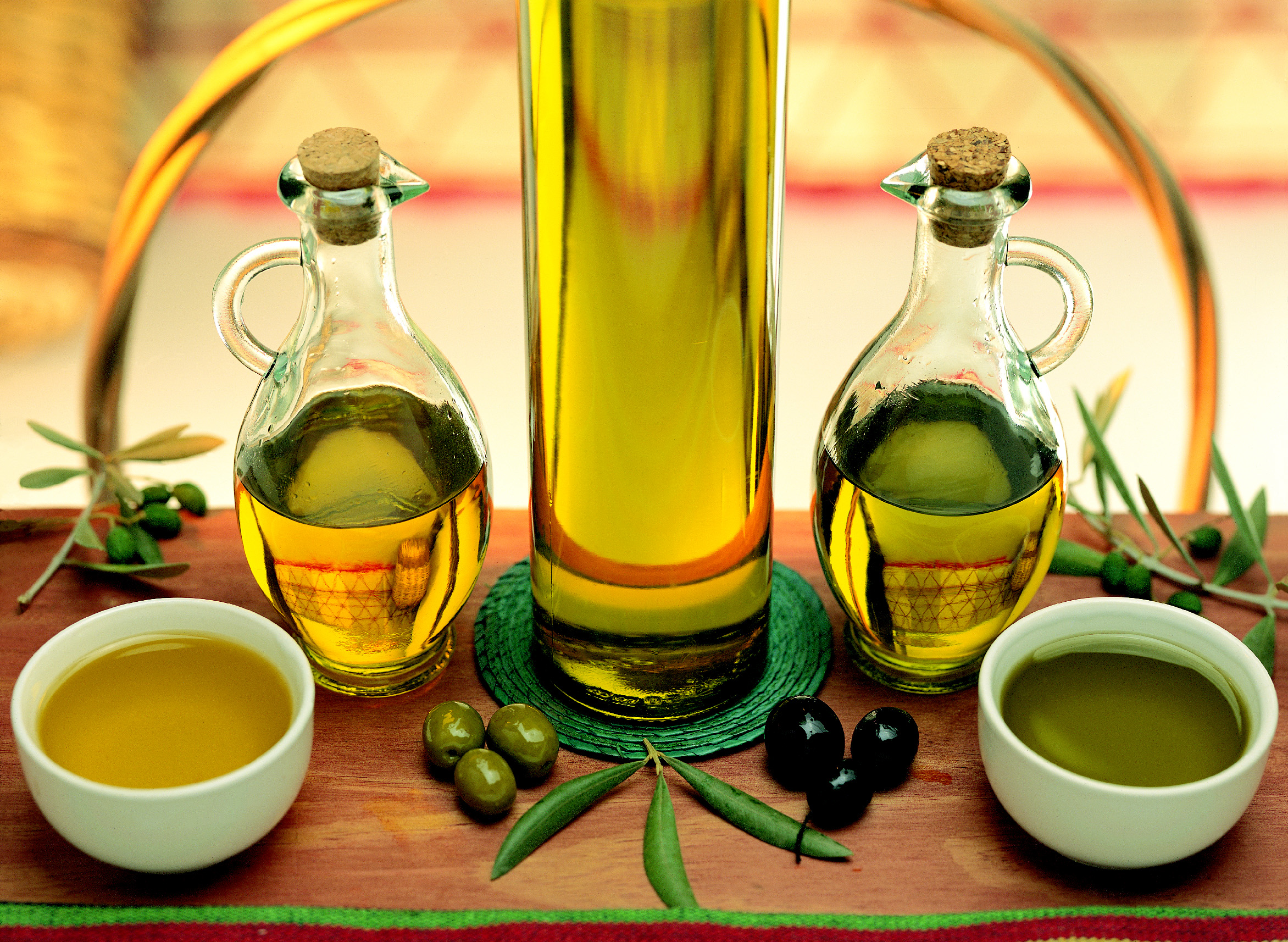Extra virgin is the highest quality and most expensive olive oil classification. It should have no defects and a flavor of fresh olives.
In chemical terms extra virgin olive oil is described as having a free acidity, expressed as oleic acid, of not more than 0.8 grams per 100 grams and a peroxide value of less than 20 milliequivalent O2. It must be produced entirely by mechanical means without the use of any solvents, and under temperatures that will not degrade the oil (less than 86°F, 30°C).
In order for an oil to qualify as “extra virgin” the oil must also pass both an official chemical test in a laboratory and a sensory evaluation by a trained tasting panel recognized by the International Olive Council. The olive oil must be found to be free from defects while exhibiting some fruitiness.
Since extra virgin olive oil is simply pressed fruit juice without additives, the factors influencing its quality and taste include the varieties of olives used, the terroir and the countless decisions, production practices and the dedication of the producer.
Olive oil tasters describe the positive attributes using the following terms:
- Fruity: Having pleasant spicy fruit flavors characteristic of fresh ripe or green olives. Ripe fruit yields oils that are milder, aromatic, buttery, and floral. Green fruit yields oils that are grassy, herbaceous, bitter, and pungent. Fruitiness also varies by the variety of olive.
- Bitter: Creating a mostly pleasant acrid flavor sensation on the tongue.
- Pungent: Creating a peppery sensation in the mouth and throat
Other Grades of Olive Oil
In countries that adhere to the olive oil standards of the International Olive Council(IOC), the following grades are used:
Virgin olive oil has a free acidity, expressed as oleic acid, of not more than 2 grams per 100 grams and the other technical characteristics for the virgin olive oil category in the IOC standard.
Ordinary virgin olive oil: virgin olive oil which has a free acidity, expressed as oleic acid, of not more than 3.3 grams per 100 grams and the other characteristics of which correspond to those fixed for this category in the standard.
Virgin olive oil not fit for consumption as it is, designated lampante virgin olive oil, is virgin olive oil which has acidity of more than 3.3 grams per 100 grams and/or the organoleptic characteristics and other characteristics for this category in the standard. It is intended for refining or for technical use.
Refined olive oil is the olive oil obtained from virgin olive oils by refining methods which do not lead to alterations in the initial glyceridic structure. It has a free acidity of not more than 0.3 grams per 100 grams.
Olive oil is the oil consisting of a blend of refined olive oil and virgin olive oils fit for consumption as they are. It has a free acidity of not more than 1 gram per 100 grams and its other technical characteristics correspond to those fixed for this category in the standard.
Olive-pomace oil is the oil comprising the blend of refined olive-pomace oil and virgin olive oils fit for consumption as they are. It has a free acidity of not more than 1 gram per 100 grams.
Crude olive-pomace oil is olive-pomace oil whose characteristics correspond to those fixed for this category in this standard. It is intended for refining for use for human consumption, or it is intended for technical use.
Refined olive-pomace oil is the oil obtained from crude olive-pomace oil by refining methods which do not lead to alterations in the initial glyceridic structure. It has a free acidity, expressed as oleic acid, of not more than 0.3 grams per 100 grams and its other characteristics correspond to those fixed for this category in the IOC standard.
Olive-pomace oils can never be labelled “olive oil.”

